
This is a very brief hands-on test of Canon EF 100-400mm f/4.5-5.6L IS USM II. I am very fortunate to have this lens loaned to me for testing by my good friend Rajashekar Meti, who purchased it on my recommendation when it was introduced earlier this year. Many of my friends had asked me to review after they saw my Tamron 150-600 review. I was not planning to buy it as I already have Canon EF 500mm f/4L IS II USM Lens. I had earlier purchased Canon EOS 80D as my second body to Canon EOS 5DSR. All the photos here are taken using Canon EOS 80D as I feel cropped body will be used much more than a full frame body with this lens by wildlife photographers to get a greater reach. It also has better autofocus system borrowed from 1DX2 which I wanted to test. This review will not cover anything about EOS 80D; you have to wait for that.

The predecessor of this new lens, Canon EF 100-400mm f/4.5-5.6L IS USM has continued to be popular throughout it’s fairly long run of over 16 years. It was introduced back in 1998. Even though I had used mark 1 version of Canon EF 100-400mm f/4.5-5.6L IS USM few years back, I was not very impressed with its sharpness on 5D Mark III. I found it lacking in image stabilization over two stops. I had only two half day sessions with this Canon EF 100-400mm f/4.5-5.6L IS USM II lens. Because of the water crisis in my area, most of wildlife sighting is scarce. Since I had talk on the same topic of Water crisis in Kundapura, I thought of reaching there early and visit the Malyadi bird sanctuary nearby. I had covered Malyadi in my earlier blog. Unfortunately, Malyadi bird sanctuary was bone dry with only very few small pools of water. I did not want to stress out the birds occupying that small water hole by approaching them close. Light was harsh and unfavourable. So I opted to test out the lens at the periphery of the sanctuary where there was a shade under the canopy. At nearly 39°C temperature it was a roasting experience to shoot birds 🙂 Drinking plenty of water along with a large towel to soak out the sweat, I tested this lens.
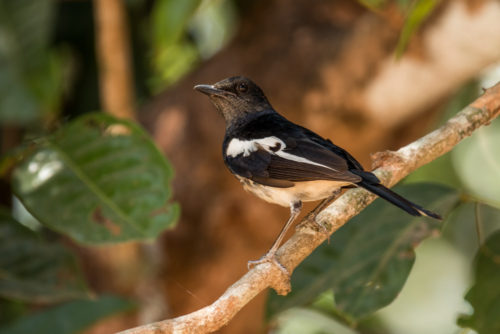
The first generation of this lens had a unique push/pull design that Canon has wisely abandoned in the second generation. There are some photographers who do love the push/pull design, but a good number of others hate it. The lens most closely resembles the design of the 70-300L with a similarly dense feel, thickness, lens color, and single barrel extension.

The Canon 100-400L II finds a very good balance between build quality and portability weighs in at 1570g. This is marginally heavier than the Mark I version of the lens (1380g) but comes in quite a bit under the Tamron 150-600 VC’s weight of 1950g.
The weight of the Canon 100-400L II is roughly comparable to that of Canon’s 70-200 f/2.8L zoom lens, so, in other words, very manageable for most users. Its retracted length is actually about 6mm shorter than the 70-200L, although unlike that lens the barrel of the 100-400L will extend significantly when zoomed to its 400mm length.

I really, really like the execution of the zoom lock on this lens. Rather than a switch it employs a ring after the focus ring that allows you to rotate the ring between “Smooth” and “Tight”. Smooth simply means normal zoom action, which is very easy and nicely damped. At the extreme of the “Tight” position the ring acts as a zoom lock, preventing zoom creep from the pull of gravity. It is a big improvement over the typical zoom lock switch as it is far more intuitive as a part of raising the lens and shooting.

The lens hood with a little window for adjusting a polarizing filter was a smart idea as it has 77mm thread which it shares with several popular lens models. I also like the design of the tripod collar. I don’t often use tripods, and so if a collar is removable, it will be removed. The bad news here is that the tripod collar is not completely removable, but it is designed to minimize weight and bulk. The actual “foot” is removable and the remainder of the collar can easily be rotated out of the way. That foot is compact enough to be easily packed along when you might want to use a monopod/tripod.

One final nice touch is that this lens has retained a very modest 77mm front filter thread. The cost of 77mm filters is fairly reasonable, and it has been such a common filter size that it likely that many people will have a few in their collection already. The Tamron 150-600 VC sports a 95mm front filter thread.

One of the talking points about this new lens is that it is designed with Canon’s extenders in mind. Particularly a 1.4x extender, which changes the focal length to a 140-560mm lens with a maximum aperture of f/8 on the long end. That revised focal length allows it to compete more directly with Tamron’s wildly popular Tamron SP 150-600mm f/5-6.3 Di VC USD lens (which I reviewed here) If you happen to own one of the Canon’s body that will autofocus with one of Canon’s extenders at f/8 (1Dx, 1DX2, 5DMKIII, 7DII and now newly introduced 80D). In fact Canon EOS 80D does better than other cameras as it has 27-point coverage at f/8 on EF 100–400mm f/4.5–5.6L IS II + Extender EF 1.4x III while other cameras including recent 7D mark II has only a single center focus point active at maximum aperture of f/8.

The images even with the extender in place remains strong. Last three images in this blog are captured using Canon EF 1.4x III Extender. As you can see the images are as sharp as ever, despite a very high ISO (low light condition) and accompanying noise.
Even with 1.4x extender (560mm equivalent) the sharpness was better than Tamron SP 150-600mm f/5-6.3 Di VC USD at 560mm. Because of the sharpness, it scores over Tamron despite having shorter maximum focal length. Between 150-400 range, both lenses feel very much neck to neck as far as the sharpness goes. Remember you need to add 1.4x TC to 560mm on 100-400 lens. Several bodies may not autofocus or focus slowly. This problem does not exist in Tamron. It is also almost half the cost of Canon lens.
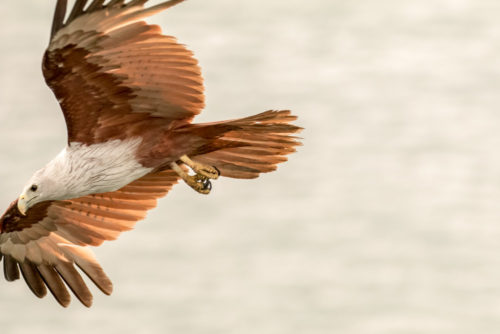
One of those shortcomings of the Mark 1 lens was a dated image stabilizer system that offered about two stops of assistance. This lens is rated 4 stops of assistance and does even better in the field (your mileage may vary). This is particularly handy when you add an extender into the equation and the effective focal length becomes even longer.
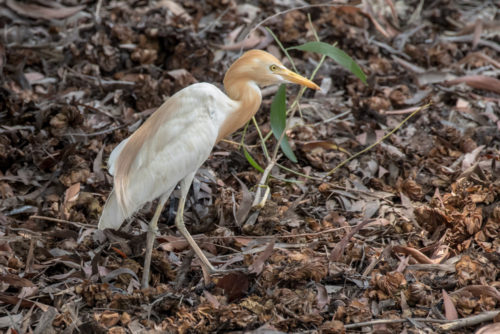
The stabilization does a remarkable job of keeping the viewfinder stabilized even with an extender attached and the lens at its maximum zoom (560mm equivalent). The lens had no problem producing a remarkably sharp image at 1/25th second at 400mm. Compared to Tamron 150-600 (which was softer after 400mm), this lens was sharp through its range.

100-400 features 4 stops IS and in my tests it really scored better than 4 stops. I was able to hand hold 400mm at 1/25 sec and 560mm after TC at 1/40 sec. Some IS systems have been effective but noisy, generating a sound like some angry bees trapped inside the barrel when activated (the 300mm f/4L IS is a notable example). The IS implementation here is very quiet. The stabilizer system also offers three different modes (1, 2, and 3). 1 is the standard mode, and probably where many users will leave it. 2 is the mode for panning, as it turns off one axis of stabilization to allow the lens to move smoothly from side to side. The 3rd mode is intriguing, as it will only engage stabilization during exposure. It is probably not a feature that I personally would use.

Other than the two switches for the stabilizer there is also an AF/MF switch for focus and a focus limiter switch. The latter allows you to choose between the full range of focus or to limit that range from 3 meters to infinity.

First of all, the autofocus in the lens is very good. It is fast and accurate. It is not the absolute fastest that I have experienced, but it is certainly good. Its focus behaviour with a 1.4x extender attached continues to be good, with only a slight tendency to hunt a bit more if initial focus is missed. I have used the Canon EOS 80D’s AF system and I feel like this lens is doing a good job with AF Servo tracking, and, unsurprisingly, that effectiveness is slightly diminished when using an extender but the lens continues to perform well.

One area that I did find disappointing with this lens’ focus was when I tried using it in low light. Late evening light, focus of the 100-400L II continued to be exceptionally accurate and the sharpness was very impressive. But I found the focus to be fairly slow in that kind of setting. My feeling is that the lens is programmed towards accuracy rather than speed when in challenging lighting conditions.
The new 100-400L has an amazing minimum focus distance of less than a meter, meaning that you will almost never miss a shot because your subject is too close again! Furthermore, it achieves a maximum magnification of around .31x, which is close to 1/3rd life size, a figure rarely seen outside of a true macro lens. Note also that the use of either extenders or extension tubes will enable even more magnification, so it is certainly a factor to consider in the price. The Dragonfly and butterfly were all captured at near minimum focus distance of one meter. It is a comfortable distance to work with these critters as they do not get disturbed with your presence. IS helped in getting a clear picture at such a magnification.

This new lens improves on the image quality of its predecessor in just about every way. It is true in the center, but even truer as you head out towards the periphery. It has a demonstratively superior performance with a 1.4x extender attached as well, meaning that the 560mm reach it can achieve is very useful. It favourably compares to the bare Tamron lens and slightly betters it at similar apertures. I have been very impressed with the image quality in every situation I have used it in. It achieves prime-like sharpness at most focal lengths, and furthermore it exhibits next to no optical shortcomings. It gives an excellent performance near minimum focus distance.

It exhibits no real chromatic aberrations or fringing in field use, and continues that excellent performance even with a 1.4x extender attached (there will be marginally more CA, but nothing really to be concerned about). The vignetting is extremely mild, and I have scarcely noticed.
Lens distortion is minor, with a bit of barrel distortion on the wide end and an almost imperceptible trace of pincushion distortion on the long end. This is not going to be an issue. Even the bokeh looks pretty nice to my eye, with none of the “nervousness” that cheaper telephotos often exhibit.

That being said, this is an extremely versatile lens. I used it for near macro work, and it did great. I used it for landscape shots, and for wildlife, and it did great. In short, the great image quality, reasonable size and heft, strong autofocus performance, and amazing minimum focus means that there is very little that this lens cannot do. Its flexibility is a big part of its appeal to me.

I’m not finding much to criticize with this lens. It isn’t cheap, but it is a pretty killer optic with a pro grade build quality. When compared with the higher end telephotos, however, it is a great bargain. It offers great reach in a compact package that most users should be able to handhold due to its manageable weight and excellent image stabilizer. It has amazing image quality with next to no real shortcomings. Tamron probably only competes with this lens in price points.

Canon EF 100-400mm f/4.5-5.6L IS USM II Summary
Pros:
- Excellent, robust build quality with weather sealing
- Strong optical performance throughout the focal range that rivals prime lenses
- Outstanding IS system that is both flexible, mannerly, and exceeds rating
- Innovative designs in the lens hood, tripod collar, and zoom lock
- 77mm filter size
- Superior minimum focus distance and maximum magnification figures
- Excellent performance with extenders* (provided you have the right camera body)
- Fast, highly accurate AF system
- Nice case included
- Three Stabilizer modes gives added flexibility
- Zoom lock easy to use when wearing gloves
Cons:
- Price tag is fairly high compared to competition (Tamron) and over Mark1 (though cheaper than the Nikon 80-400mm)
- Lens with Canon extender will only AF on select bodies
- AF system slows dramatically in low light situations
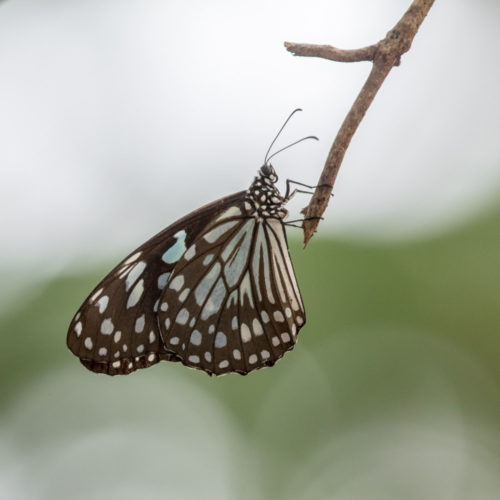
As compared with the Tamron SP 150-600mm f/5-6.3 Di VC USD
Pros:
- Superior build quality
- Slightly faster AF and better AF Servo quality
- Somewhat better image quality, particularly toward the edges
- Store more compactly
- More Stabilizer Modes
- Much smaller filter thread (77mm vs. 95mm)
- Much better minimum focus distance (.98m vs. 2.7m)
- Better maximum magnification
- Better hood design
- Includes case
- Better sharpness throughout the range, (Tamron is softer after 400mm)
Cons:
- Higher price (plus the cost of an extender if you want longer reach and don’t own one).
- Smaller zoom range
- Requires extenders to reach somewhat similar focal length
- Will not AF on most camera bodies with a Canon extender attached
- Slower aperture speed when combined with extender
- Tripod collar not completely removable
Disclosure: I was not financially compensated for this post. I borrowed the lens from my friend for review purposes. Canon no way influenced me to write this review. The opinions are completely my own based on my experience. The photo of the Lens used is from Canon website.

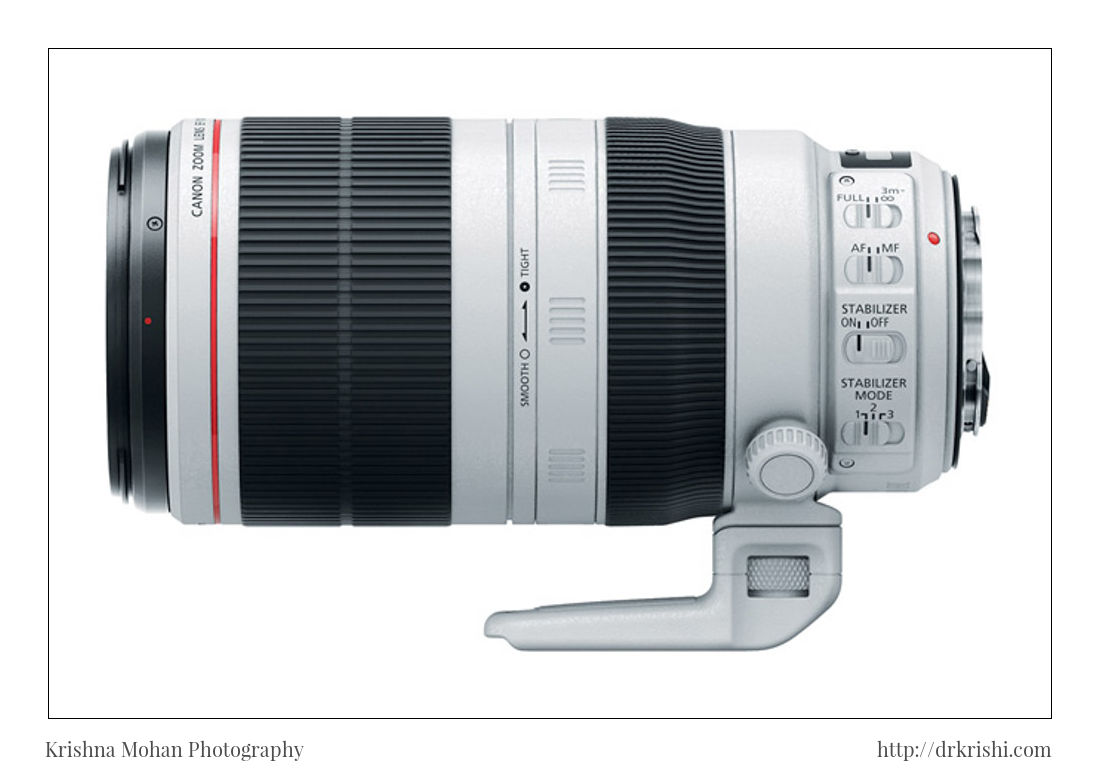
Very useful review.
Very informative review of the lens and its results are very nice.
Thanks for the review.
Thanks for the detail reviews Sir, But i have really learnt about the cross points and the way you have explained.
Most important of going through this is Butterfly Click, having a Details in blog but definitely not in FB ?.
Thanks once again for sharing your knowledge.